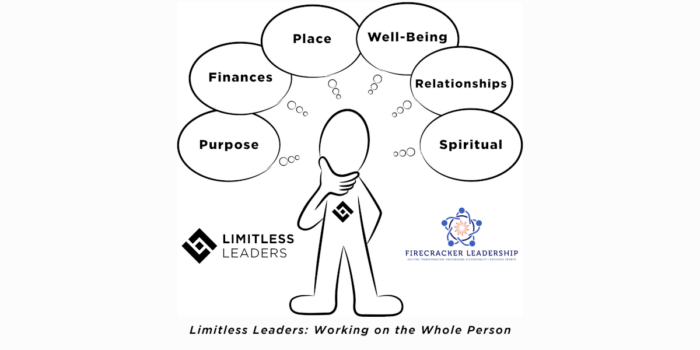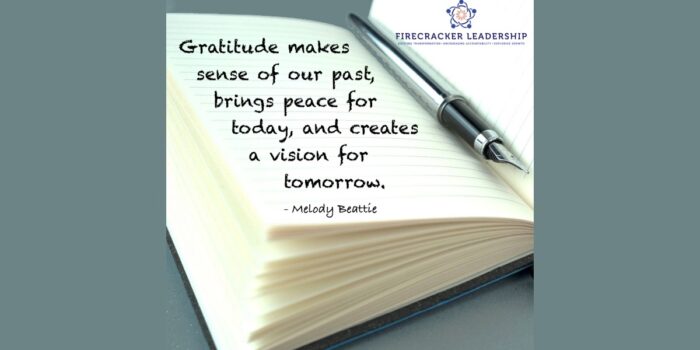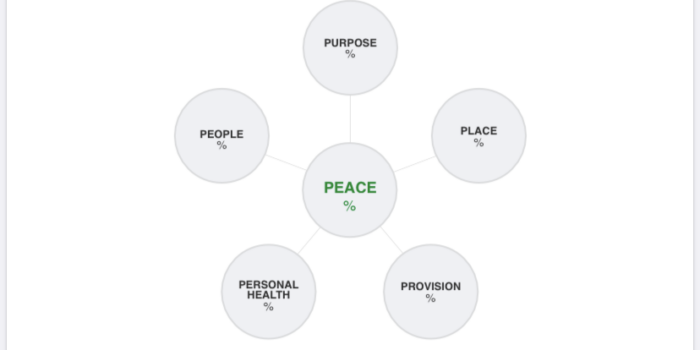In their recent McKinsey Quarterly cover story “‘Great Attrition’ or ‘Great Attraction’? The choice is yours,” authors Aaron De Smet, Bonnie Dowling, Marino Mugayar-Baldocchi, and Bill Schaninger made the point that many employers don’t really know why their employees are leaving in droves. After reading the story, Adria Horn, executive vice president of workforce at Tilson, a national telecom provider based in Portland, Maine, emailed Aaron De Smet. Horn is a lieutenant colonel in the US Army Reserve and an army veteran who served five tours of duty overseas between 2003 and 2010. The McKinsey story, she wrote in her letter, “leads me to my own thesis: employees don’t know why employees are leaving. And this is more important.”Horn compared her feelings after returning to the US from deployment in Iraq and Afghanistan to the struggles of employees negotiating the ambiguity of adjusting to a new normal of work, such as returning to the office after a long stretch of muddling through the crisis created by a global pandemic. Of course, the experience of working from home or in an office is in no way comparable to the intensity of serving in a combat zone. But the emotional reaction to returning from deployment does parallel what many workers are experiencing now. “This Great Resignation is actually a normal response that most people have never gone through,” Adria wrote. “I’ve experienced this kind of thing after every return from deployment.”Aaron called Adria soon after receiving the letter, and over the past month, the two have engaged in a running conversation about the causes of the Great Resignation, the nature of redeployment anomie, confusion, grief, and anger, and the opportunity for leaders to respond in ways that serve both employees and the company. The following is an edited version of their conversations, with excerpts from Adria’s letter.
Employees are confused—as they should be
“Between 2003 and 2010, I deployed five times—Iraq, Afghanistan, Philippines, Indonesia. Every time I returned, I’d sit with my unit in a dark theater on post to receive a mandatory return and reintegration brief from the chaplain. The chaplain would show us a PowerPoint presentation for an hour, telling us all that things will feel different, that even though you’re happy to be back, you’ll feel like you don’t fit in, that your house and your routine will feel strange, that your family won’t understand you, and you won’t understand them or why. It just kept going with hopes of prepping us to be more aware of these internal feelings and to act on them accordingly, not emotionally. On the surface, I guess I appreciated the warning, but I never understood the ‘why.’ Maybe I’m just a slow learner, but it took me three deployments to understand why I was feeling this way over and over.”
Adria Horn: Coming back from deployment is hard. You’re expecting it to be great. You’re home again, this should be great! But the biggest feeling is that things are different. The kids are different. Your favorite restaurant closed, your pet died, and your softball team broke up. The couch your partner bought while you were away is great—but it’s not the couch you knew. Home isn’t normal, it isn’t as it was. Things don’t meet your expectations, and you seem to have lost control, so your return experience doesn’t feel good at all.
Aaron De Smet: In some ways, workers have been deployed and redeployed during COVID-19. Many got deployed to home for COVID-19, or to the front lines during a pandemic, and then those working from home have been redeployed as they have attempted to return from remote and get back to the office. Most companies could not really prepare workers for either the COVID deployment or the return to office—unlike the military, they have no real experience of anything like this.
Workers have been deployed and redeployed during COVID-19. Many got deployed to home or to the front lines, and then those working from home have been redeployed as they have attempted to return from remote and get back to the office.
Aaron De Smet
Adria Horn: It has been an intense period full of unknowns. It’s hard to be self-aware enough to see the full impact of all these changes. I redeployed five times, and I got better at reintegrating each time. I had the benefit of practice, which allowed me to acknowledge what I was feeling, understand it better, and move forward. But the pandemic is a one-time thing, and most people never got a briefing from their chaplain about what to expect.
Aaron De Smet: All the patterns and routines are broken. You’ve lost your tribe. Your sense of community and belonging at work depended on cohesive social networks, and so many of those have been disrupted during the pandemic. You feel left behind, somehow, and it’s very hard to process emotionally.
Adria Horn: It is. Especially because you don’t see things when they’re happening to you and everyone around you at the same time.
Aaron De Smet: Right! Everyone’s having this experience, so why does it seem odd to me? But it is odd. Interactions are awkward from the start—do we elbow bump or shake hands or do nothing? Every meeting or call has to be scheduled—no more dropping into your colleague’s office. Some executives have told me that they’ve had meetings where they are in a conference room and other participants are videoconferencing in from two floors away. This isn’t what they wanted when they brought people back to work.
Adria Horn: It’s hard to manage this if you can’t acknowledge it. People’s hopes and expectations are going unmet in ways that many don’t realize and can’t articulate. Being off balance that way puts people on edge; it throws them off-kilter.
Unprecedented challenges lead to unprecedented decisions
“During 2020, while working from the safety of my house yet leading the COVID-19 effort for my company, I felt deployed again. Months before the Great Resignation started, I told my company leadership team that a Great Something would come because it always does after the return-from-deployment high wears off. People spend their money in crazy ways, get married, divorced, make rash decisions, buy motorcycles and crash them, take their own lives, finally take that bucket-list trip. I’m not a doctor, not a scientist, just a five-time observer of deployment burnout—the high and then low after returning, and the caged feeling. People ultimately need to set themselves free. The emotional ties that may have bound people together during the pandemic work period has waned, and now they will seek opportunities not only to unpin their clipped wings but to fully expand them in ways they wouldn’t have let themselves do previously.”
Aaron De Smet: There are many different levels of grief now. People grieve for others who have died. They grieve over all the things they missed during COVID-19, like a vacation or going to the movies or seeing friends and colleagues. And with some companies transitioning back to the office, people are grieving doubly—they miss things they got used to during the pandemic, working from home, and they miss the way work was before the pandemic. Some coming back to the office expected it to be same as before, and they were hoping to get some magic from being back in the office, but for many it just feels awkward.
Adria Horn: It’s grief from a series of micro changes that we can’t even identify. People redeploying really do miss important things, like their routine, their trusted network of colleagues and friends, their sense of who they are at work and at home. But they think their grief trivializes the grief of people who lost someone. “I’m just upset because things changed,” they think. “My grief is unworthy. Why can’t I just be grateful for what I have?”
People redeploying really miss important things, like their routine, their trusted network of colleagues and friends, their sense of who they are at work and at home. But they think their grief trivializes the grief of people who lost someone.
Adria Horn
Aaron De Smet: Right. “Am I a horrible person?”
Adria Horn: But they—and their employers—shouldn’t diminish their experience. We all go through things in different ways. People are accumulating disappointment now. It’s real, and it’s spurring them to make decisions they normally wouldn’t.
Aaron De Smet: After any crisis that shatters existing norms or creates life-and-death stakes, people tend to step back and take stock. They ask themselves, “What’s the cost of this career track I’m on? How fulfilling is this? Is this what I want out of my life?” People are quitting now because they are taking stock after having been deployed during COVID-19. But it’s very rare to have everyone step back and ask these questions at roughly the same time.
Adria Horn: Since 2001, 1.9 million Americans have been deployed to Afghanistan and Iraq. That’s far less than 1 percent of the US population. With COVID-19, just about everyone in the world was deployed. They didn’t know that they were deployed, they weren’t equipped to know what was coming, and we still don’t know when or even if it will fully end. With a military deployment you have an end date.
Aaron De Smet: And this end date never seems to arrive. Just when it seemed like things might taper off, Delta arrived, and then Omicron. Parents think they’ve set up some kind of acceptable hybrid workweek, and then their children are sent home from school. The vagueness, the confusion, the sense of threat, and the lack of control just lingers. No wonder people are feeling burned out.
Adria Horn: In the past, I noticed that when people left Tilson, they tried to wrap things up. They wanted to cleanly hand off their work to a colleague, they wanted closure. Now they’re like, “I’m done.” They’re not waiting for closure. They’re leaving bitter, and they can’t put their finger on why they’re so upset. Some say it’s the working conditions, but I don’t think that’s really it. We have a phrase for that at Tilson: “The thing is not the thing.” It’s been true time after time.
Aaron De Smet: I hear this from so many employers. In the past, barring a traumatic event, people would only leave after wrapping up their projects, after setting things in place. But now they say they need to leave in a week.
What can companies do? Adapt, accept . . . and hug
“I think we’re actually in the beginning of a longitudinal study in human behavior. The employee response we’re seeing is a normal response to a traumatic period. If employers truly acknowledge this, they can empower employees to find their way. I think employers should stop trying to aggressively retain employees. If ‘the thing is not the thing,’ then set them free professionally and welcome them back if and when it’s right for them again. Employers should start tracking the number of return hires they have. This will be the better long-term gauge of how they’ve treated their employees after a traumatic event.”
Adria Horn: At Tilson, we’ve had a lot of discussion about turnover. It started out as it starts out for everyone: “How are we going to reduce turnover? Is the turnover an indication that we’re not doing something right?” But we have a few veterans on our leadership team, and we quickly came to see that this was a normal, even predictable, reaction. We offer strong mental-health benefits, but it’s been just as important during the pandemic to communicate constantly with our employees. During a series of monthly, virtual office hours, the COO and I made clear to our employees that the confusion they might be experiencing is perfectly normal. We told them that the things we’re all feeling now are part of a normal process. It may take you time. You may not be able to process all of this and feel that you can stay at Tilson. That’s OK. We’ll do professional separations. And then, if you want to come back, we’ll welcome you back. A few people have come back already. Employers should welcome them back. Don’t hold it against them if they leave suddenly.
Aaron De Smet: You’re saying that if you need to leave in a week, that’s OK. In a normal circumstance, most employers would say, “That’s unacceptable and never come back.”
We’re actually in the beginning of a longitudinal study in human behavior. The employee response we’re seeing is a normal response to a traumatic period. If employers truly acknowledge this, they can empower employees to find their way.
Adria Horn
Adria Horn: We say everyone’s been through a collective trauma and they deserve a break.
Aaron De Smet: One of the top predictors of life longevity is having broad social connections. People have lost that during the past two years.
Adria Horn: I have two children, one five years old and the other ten. The five-year-old is full of spit and vigor, just like I was as a kid. A few months ago, she was just giving it to me, mad about this and mad about that. And I was mad at her back. Then I read one of those parenting books, which had a chapter on hugging your angry child. It was exactly the opposite of what I felt like doing. But I started doing it. I started hugging her when she was mad, hugging her hard and long, and things just softened and de-escalated. That’s kind of what a lot of employees need now. I’ve never seen it quite like this in all my years at work, but that is what people need now. They need a professional and psychologically safe working environment, which I believe is the equivalent of a long, strong hug.
Aaron De Smet: They’re not getting hugs.
Adria Horn: People need to feel valued and supported, even when they’re not entirely sure why they’re feeling so fragile.
Aaron De Smet: It’s much more of a human problem than a typical business challenge. I mean, the labor shortage is a significant and challenging business problem—but ironically, it may be that the best thing employers can do for their business right now is to stop thinking of the Great Attrition as a business problem, and instead simply address it as a human problem.



